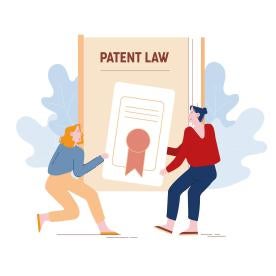Applying Seventh Circuit law to determine whether the dismissal of patent infringement claims should be upheld on the basis of claim preclusion, the US Court of Appeals for the Federal Circuit reversed a district court ruling that the claims were precluded by res judicata. Inguran, LLC v. ABS Global, Inc., Case No. 22-1385 (Fed. Cir. July 5, 2023) (Lourie, Bryson, Reyna, JJ.)
At the district court, ABS argued that a previous infringement suit brought by Inguran precluded it from bringing the instant suit. At issue was whether the previous suit asserting direct infringement of Inguran’s “GSS technology” used to create “single-sexed semen straws” barred the current suit, which alleged that ABS induced third parties to infringe upon the same technology by entering into licensing agreements with these third parties. The district court agreed with ABS. Inguran appealed.
To successfully assert claim preclusion under Seventh Circuit law, a party must meet the following three-factor test:
- An identity of the parties or their privies in the first and second lawsuits
- An identity of the cause of action
- A final judgment on the merits in the first suit.
The Federal Circuit’s analysis focused on the second requirement. In determining whether there was an identity of the cause of action, the Court examined whether the second claim was based on the same set of transactional facts as the earlier litigation between the parties. In patent infringement cases, the general rule is that res judicata does not bar the assertion of new rights acquired during the previous action, which could have been litigated but were not (i.e., claims that arose while the litigation was ongoing but after the original complaint was filed).
The Federal Circuit determined that the transactional facts between the present case and the previous litigation were different because the cases respectively centered around theories of induced infringement by third parties and direct infringement. As the Court noted, “The evidence needed to support these two claims (induced infringement vs direct infringement) is different.” To allege and prove induced infringement, Inguran needed to establish additional facts beyond what it asserted in the previous case to show direct infringement. As the Court noted, an “induced infringement claim rests on evidence and elements beyond those required by direct infringement.” Although minimal evidence regarding the activities of the third parties was part of the record in the previous litigation, the parties ultimately stipulated that direct infringement occurred. The issue of induced infringement, however, was never presented to the jury.
The Federal Circuit held that although both cases implicated similar facts, including extensive discussions of the “GSS technology,” the direct infringement allegations could not reasonably serve to bar later allegations regarding the actions of third-party licensees. The Court accepted Inguran’s argument that any induced patent infringement claim it might have brought at the time of the earlier case would have been based on speculation: “[w]e agree with ST that it could not have asserted an inducement claim during ABS I.” The Court therefore rejected the district court’s “broadened” interpretation of the scope of its prior order (to include induced infringement) and held that claim preclusion did not apply in this case.




 i
i


